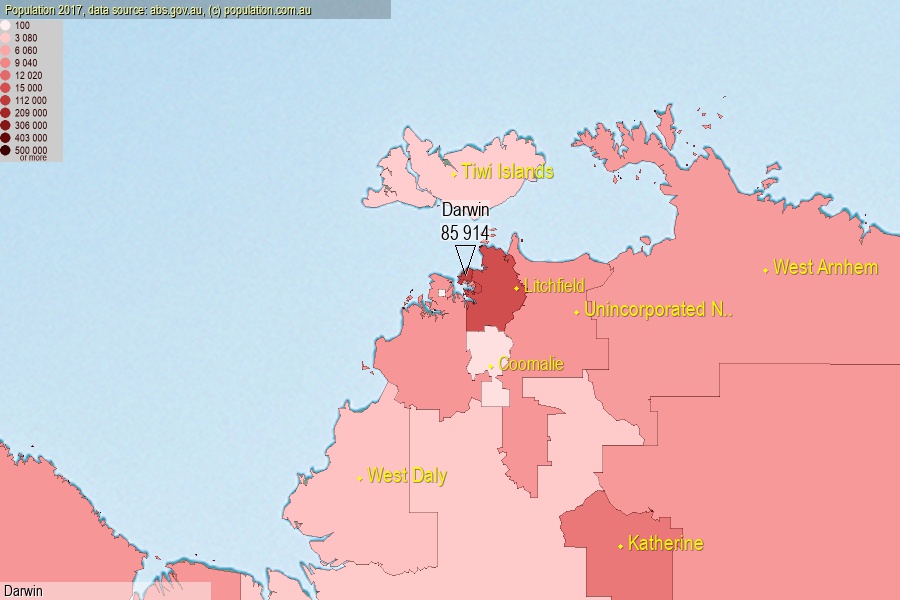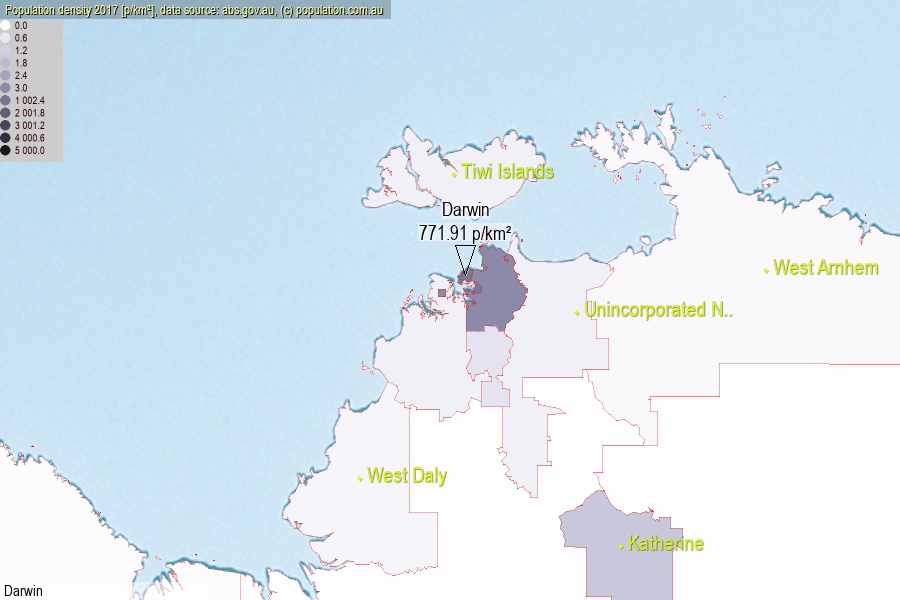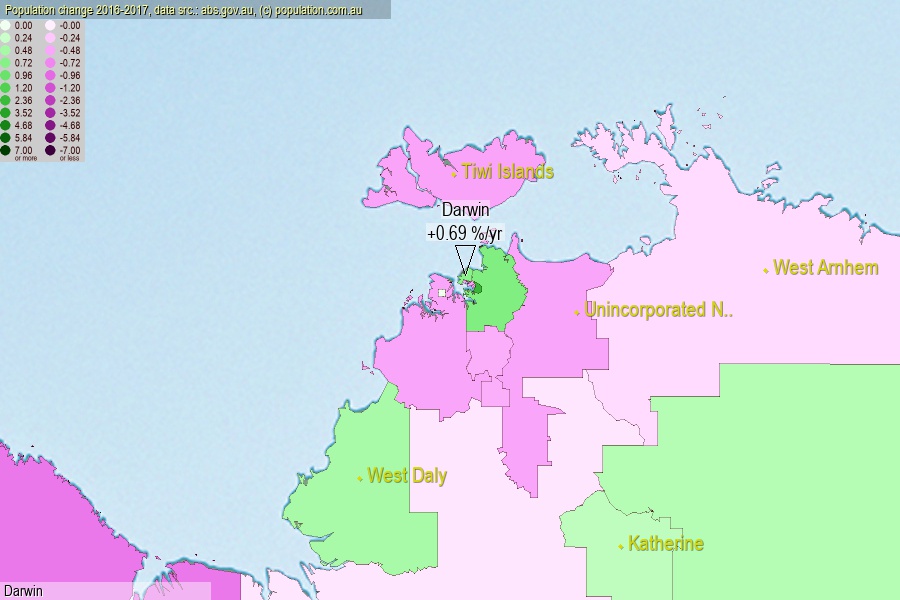 population.com.au
population.com.auLast official estimated population of Darwin City (as Local Government Area) was 85 914 people (on 2017-06-30)[2]. This was 0.35% of total Australian population and 34.827% of NT population. Area of Darwin is 111.30 km², in this year population density was 771.91 p/km² . If population growth rate would be same as in period 2016-2017 (+0.69%/yr), Darwin population in 2025 would be 90 792. [0]



Click to enlarge. Darwin is located in the center of the images.
Population [people], population density [p./km²] and population change [%/year] [2]
[1996-2001] +0.22 %/Y
[2001-2002] -0.50 %/Y
[2002-2003] -0.46 %/Y
[2003-2004] +0.54 %/Y
[2004-2005] +1.73 %/Y
[2005-2006] +1.17 %/Y
[2006-2007] +1.92 %/Y
[2007-2008] +2.58 %/Y
[2008-2009] +2.90 %/Y
[2009-2010] +1.45 %/Y
[2010-2011] +0.75 %/Y
[2011-2012] +2.51 %/Y
[2012-2013] +3.18 %/Y
[2013-2014] +0.12 %/Y
[2014-2015] +1.52 %/Y
[2015-2016] +1.14 %/Y
[2016-2017] +0.69 %/Y
[0] Calculated with linear interpolation from officially estimated population
[1] Read more about LGA and Australian Statistical Geography Standard (ASGS) on abs.gov.au
[2] Population data from Australian Bureau of Statistics (Population and density: 2017; change: 2016-2017)
[3] Digital Boundaries: Australian Statistical Geography Standard (ASGS) 2016.